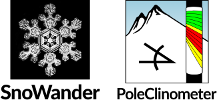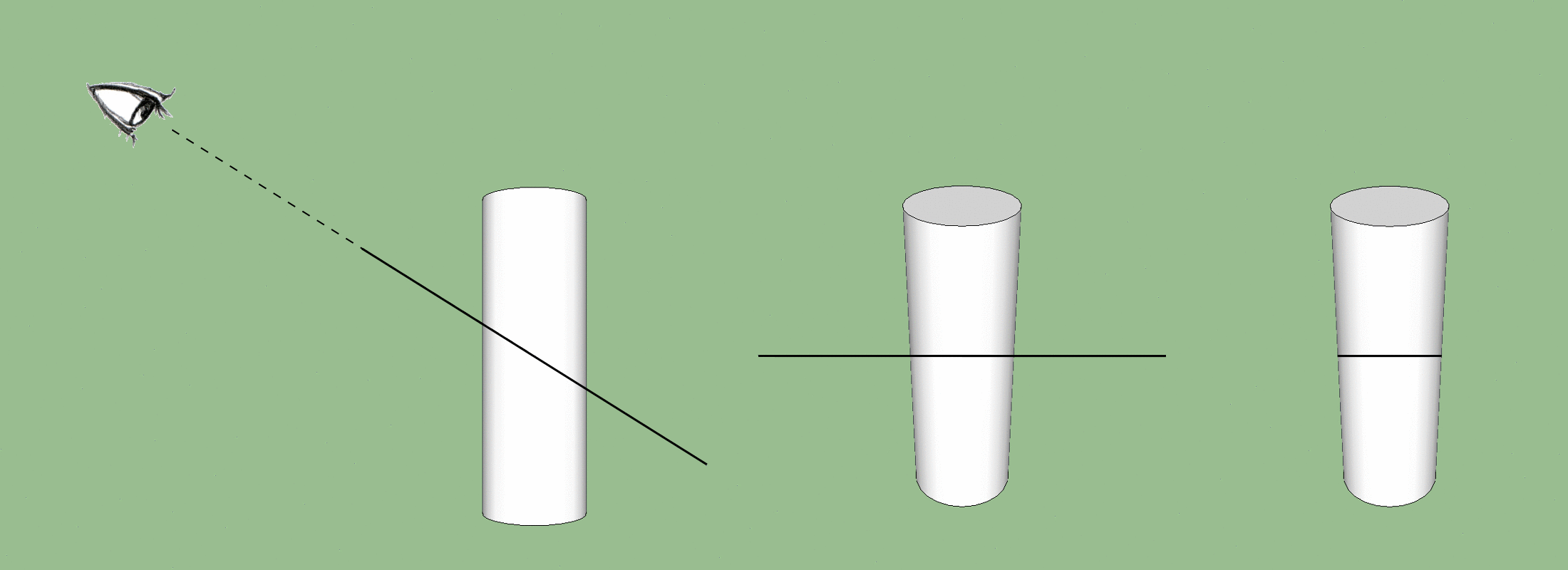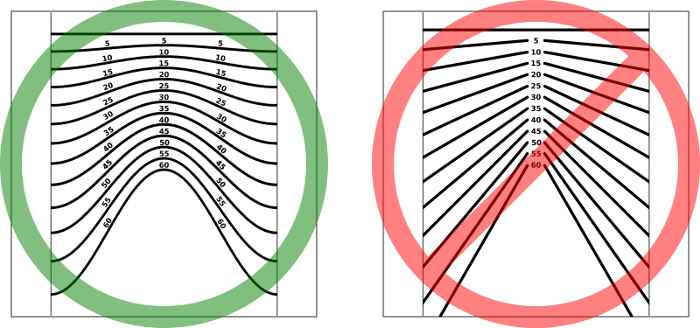How Does PoleClinometer Work?
The PoleClinometer slope meter uses the shape of your pole to do its thing. The typical ski pole…
- will hang vertically when you dangle it (like a plumb bob). This is critical.
- has a cylindrical shaft, so lines around it representing slope angles can be read from different perspectives (see below).
The trick is in the “lines”. Each PoleClinometer slope line is defined by the intersection of a hypothetical plane (representing a given slope angle) with the surface of the cylindrical pole shaft. Such a line will appear straight only when viewed from any point on that plane, and will otherwise appear curved, as illustrated below. See the use page for how this gets applied in practice.
Interestingly, in order for these lines to appear straight as viewed on the pole shaft (and to accurately represent specific slope angles) they must follow a specific curve when plotted on the flat sticker. These curves are where the magic happens, and defining them requires just a bit of math…
Mathemagical Curves
Each slope line on a PoleClinometer sticker is a precise sinusoidal curve to accurately represent a specific slope angle when wrapped around a cylindrical pole shaft. If you really want to get your geek on, check out the math behind the magic of PoleClinometer curves. Otherwise, suffice it to say: Straight lines don’t work!
Steer Clear of Straight Lines
There’ve been a couple attempts at ski pole inclinometer stickers that incorporate straight lines (details here). These straight-lined inclinometer stickers should be avoided as they’re inherently flawed and highly inaccurate. But I credit them as my inspiration to find a way to do it right, which led to PoleClinometer.


